Lal Katana
Wheel Sizes: 29’’ front / 27.5’’ rear or 29’’ front and rear (via swappable rocker link)
Suspension Travel:
- Frame: 130mm
- Fork: 150 mm
Geometry Highlights:
- Sizes offered: S1, S2, S3, S4
- Headtube angle: 64°
- Reach (size S3): 485 mm
- Seat tube angle: 78° (effective) / 76.5° (actual)
- Chainstay length (size S3): 435 mm
Frame Materials: Steel front triangle / carbon fiber swingarm
Price: Frame w/ derailleur: $4,850 CAD (~$3,375 USD at time of writing)
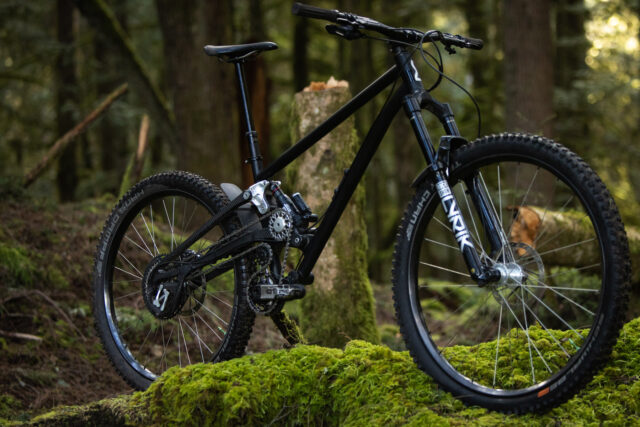
Intro
Lal Bikes was founded to bring the innovative Supre Drive drivetrain to market and began by partnering with existing frame manufacturers to integrate the Supre Drive into those brands’ bikes. The Nicolai Nucleon 16 was the first of those to come to market, and while Lal is still pursuing working with some other manufacturers, they’ve also gone ahead and launched their own Supre Drive-equipped frame — the Katana.
If you want to hear a lot more about the backstory behind the Katana and its development, check out Ep.269 of Bikes & Big Ideas with Lal founder and designer of the Katana, Cedric Eveleigh. In the meantime, read on as we dig into the details of the frame.
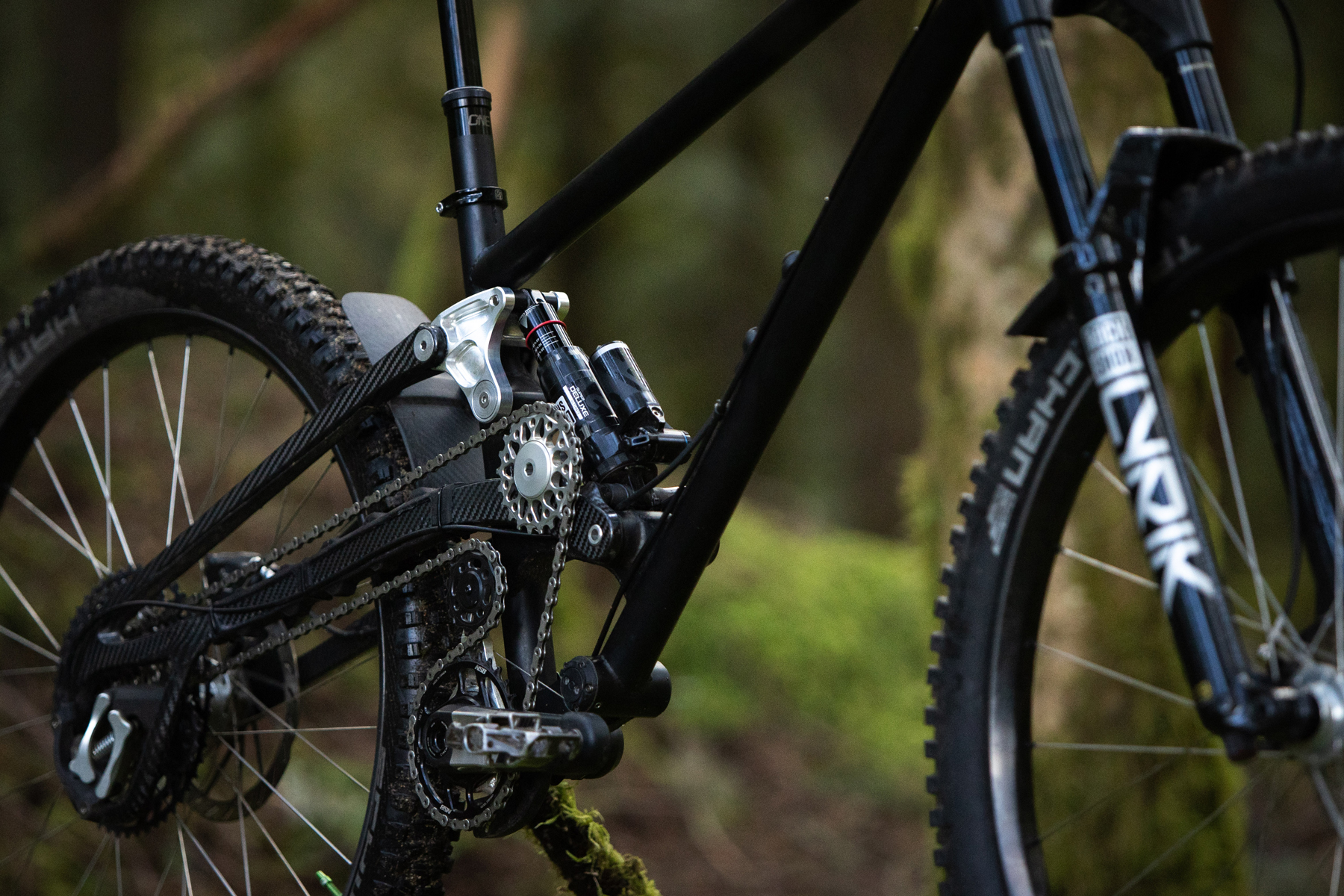
The Frame
The Katana is, of course, built around Lal’s Supre Drive drivetrain. We’ve already covered the Supre Drive in more detail in Ep.94 and Ep.179 of Bikes & Big Ideas and our review of the Nicolai Nucleon 16, but here’s a quick rundown:
The main point of the Supre Drive is to maintain the efficiency of a derailleur-based drivetrain while mitigating the possibility of derailleur damage by getting rid of the dangling cage. The Supre Drive does so by effectively splitting the derailleur in half — the derailleur parallelogram and guide pulley (the upper one that shifts the chain across the cassette) work more or less as they do on a conventional one, but everything is packaged inside the rear triangle, where it’s protected from impacts.
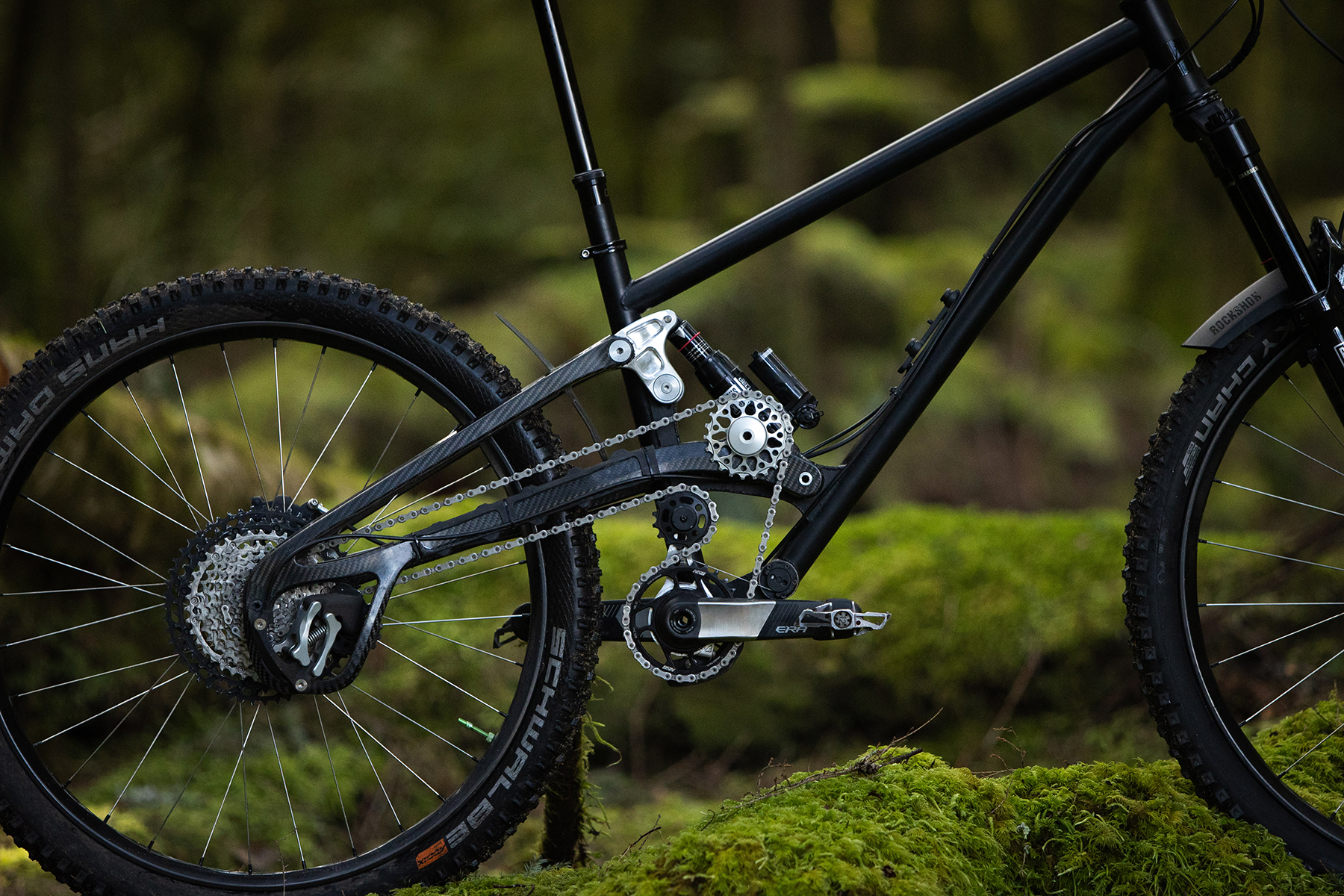
A closer look at the layout shows that there’s no cage attached to the derailleur at all — a tensioner arm and pulley that pivot around the bottom bracket take the place of a regular derailleur cage, their task being to maintain chain tension across the gear range and as the suspension cycles. The tensioner arm is controlled by a spring and hydraulic damper, with the latter replacing the more typical friction clutch found in most modern derailleurs.
Packaging the tensioner arm requires a high-pivot suspension layout, but despite its wild aesthetics, there aren’t any more pulleys or points of chain contact than there are with a more conventional high-pivot suspension layout — they’re just packaged differently. The Supre Drive uses a Shimano 12-speed shifter, cassette, and chain, so replacements are readily available.
The version of the hydraulic chain damper used in the Nucleon 16 was a long, slender unit that slid inside the downtube, but Lal has come up with a much more compact version for the Katana that now uses an off-the-shelf rotary hydraulic damper rather than a custom-built linear one. The new version is much more compact, and Lal says it’s easier to replace the cable that ties it to the tensioner arm (a minor but notable annoyance with the older linear damper).
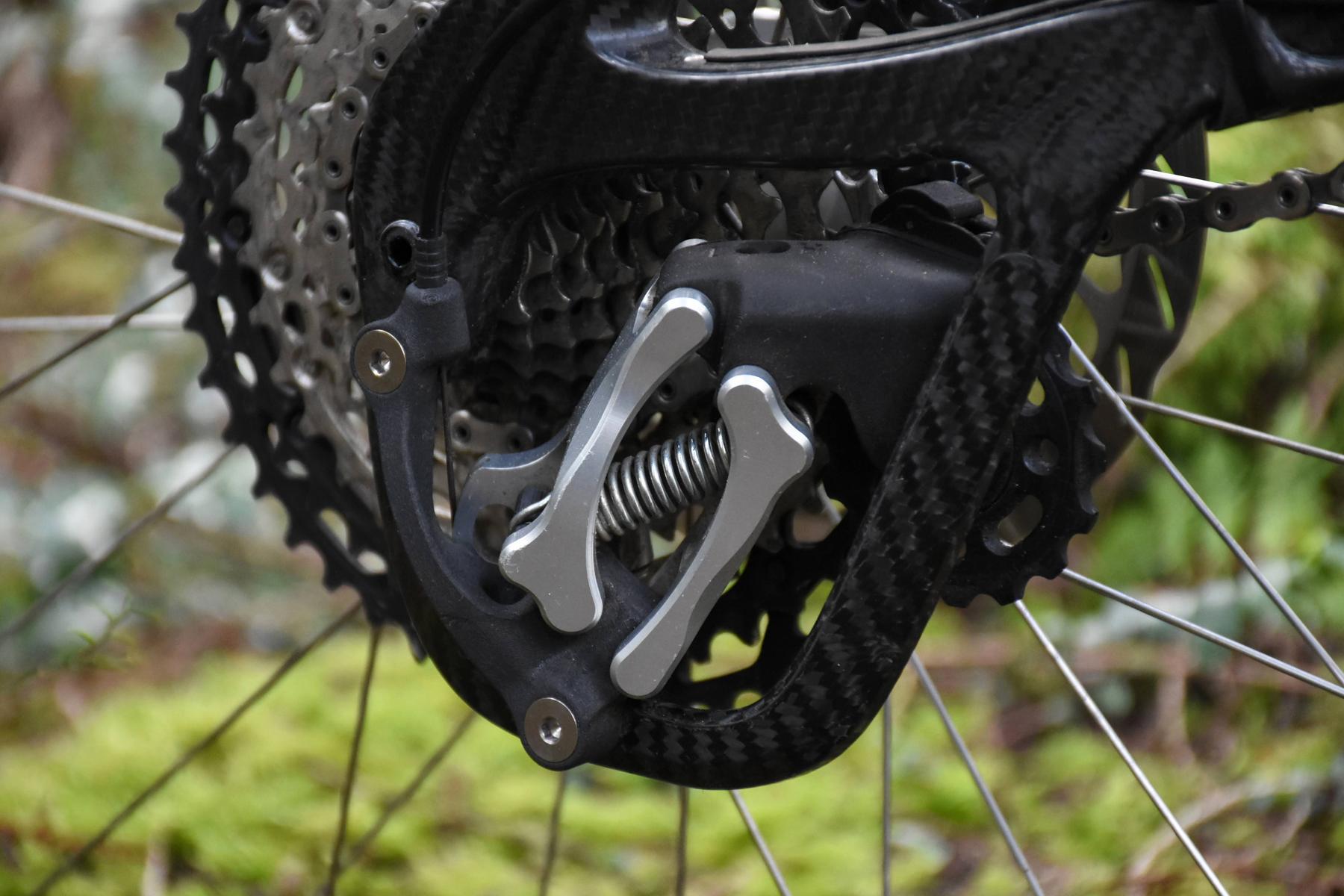
To that end, it’s a much shorter-travel bike than the Nucleon, with 130 mm of rear travel and a 150 mm fork. That shorter suspension travel is mated to geometry that’s more typical of an all-rounder Trail bike (more on that below). Lal has also focused heavily on the frame’s ride quality and stiffness properties and landed on an unconventional combination of materials to get there: the front triangle is crafted from Reynolds 853 steel, matched to a carbon fiber swingarm.
There are a few reasons for the mixed material arrangement. Lal’s take is that minimizing the amount of unsprung weight (including the swingarm) is valuable, but leaving some weight in the front triangle (which is sprung weight) can be a good thing. Unsprung weight needs to move for the suspension to move, and accelerating more weight back and forth makes the suspension slower to react. Sprung weight doesn’t move with the suspension, and having some mass there helps make the bike feel more stable and planted. (See, for example, the plethora of World Cup Downhill racers who have been deliberately adding weight near the bottom bracket on their bikes.)
Lal also cites the muted ride feel of steel as an upside in the front triangle. It’s easier to build a stiff swingarm out of carbon fiber (especially without making it quite heavy), hence that choice.
Carbon fiber also helps facilitate the flex pivot suspension arrangement used on the Katana. It’s effectively a linkage-driven single pivot with a small amount of flex in the swingarm (about 3° of total movement) instead of a more standard dropout pivot. That move saves some weight, simplifies the construction, and means there are two fewer bearings to maintain; Lal also says that almost all of the flex happens deep in the travel so that the initial sensitivity of the suspension isn’t impeded. The Katana gets its 130 mm of rear wheel travel from a 190 x 45 mm shock, which is mounted in a floating arrangement between the rocker link and the swingarm.
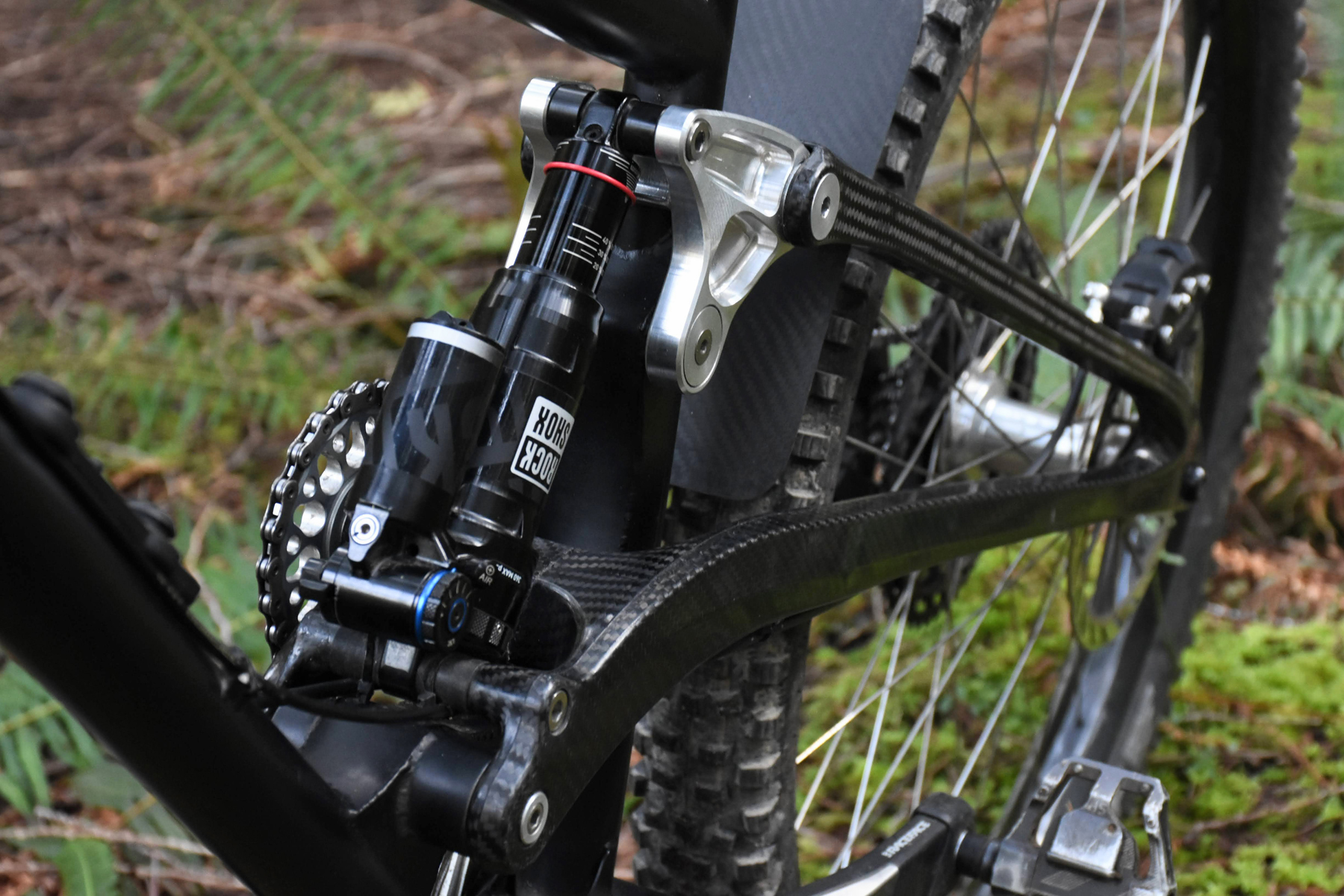
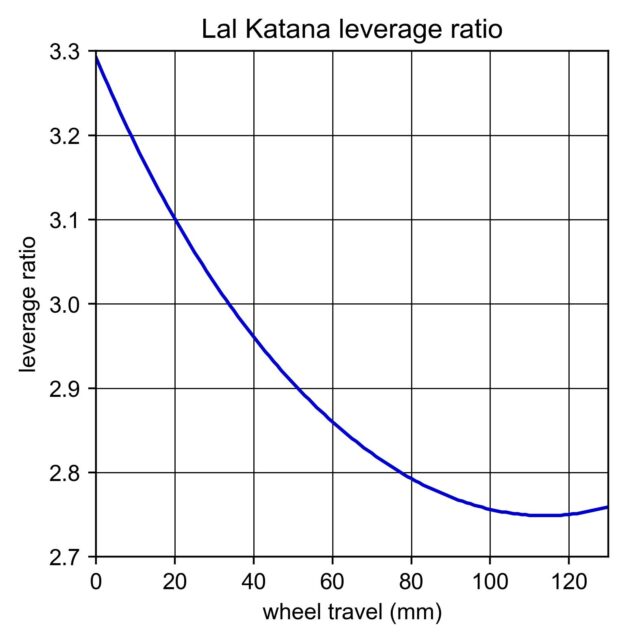
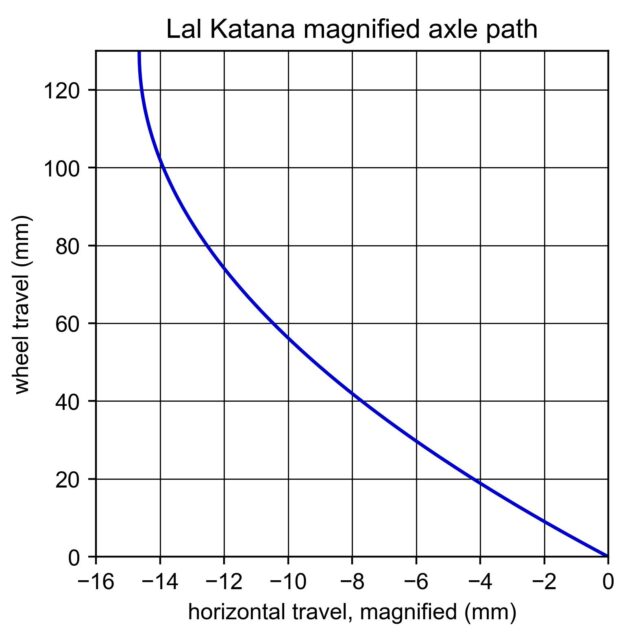
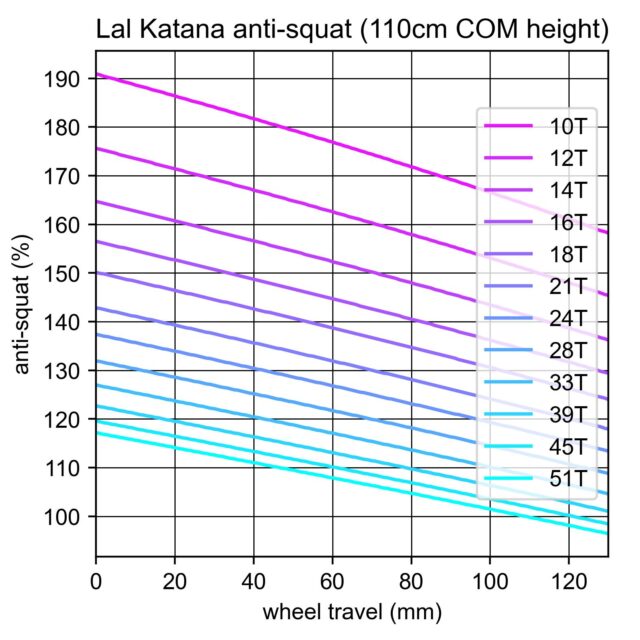
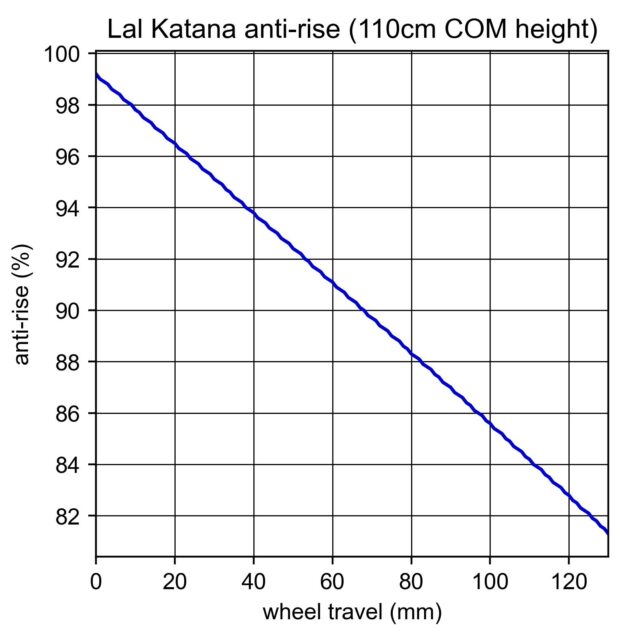
Fit & Geometry
Lal will be offering the Katana in four standard sizes, labeled S1 through S4 (which roughly correlate to Small / Medium / Large / XL in a more traditional nominal sizing scheme. All four sizes get a 64° headtube angle, 78° effective / 76.5° actual seat tube angle, and a 35 mm bottom bracket drop, relative to the front axle. Reach starts at 445 mm on the S1 and increases to 505 mm on the S4, with 20 mm increment stops along the way.
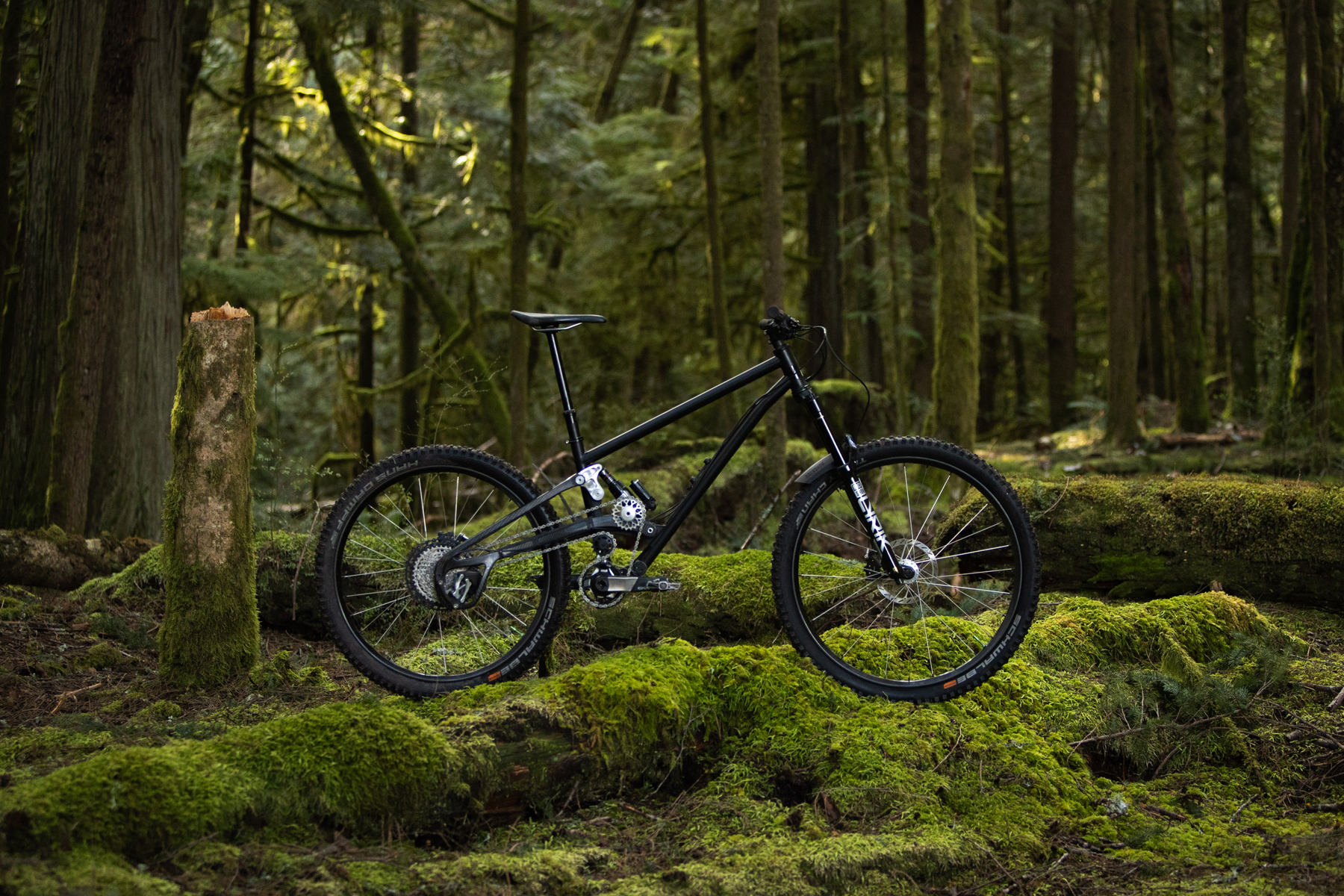
The chainstay length is also highly size-specific, starting at 414 mm on the S1 and then increasing to 425 mm (S2), 435 mm (S3), and 448 mm (S4), in the mixed wheel size setup; going to the full 29er configuration lengthens the chainstays by 4 mm. Stack heights are fairly typical by modern standards at 621 / 630 / 639 / 657 mm.
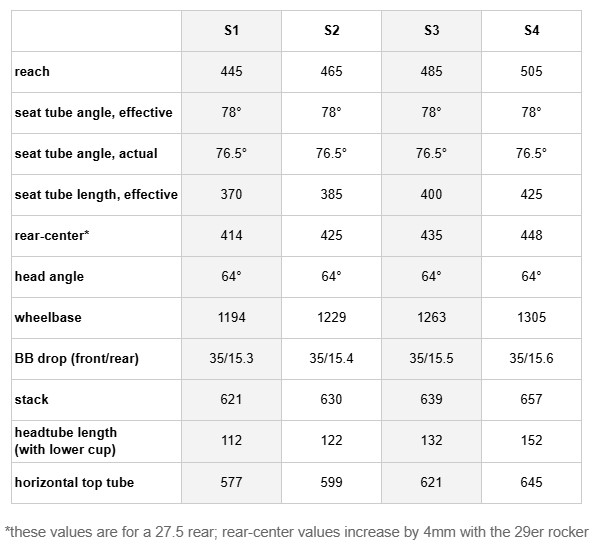
The Builds
Lal will be offering the Katana as a frame only for the time being. A $500 CAD refundable deposit will secure your place in line for a Katana frame, with the first production bikes expected to ship in March 2026. The total price for the frame and derailleur / chain tensioner is $4,800 CAD (about $3,375 USD at the time of publication), with the balance due when the frame ships.
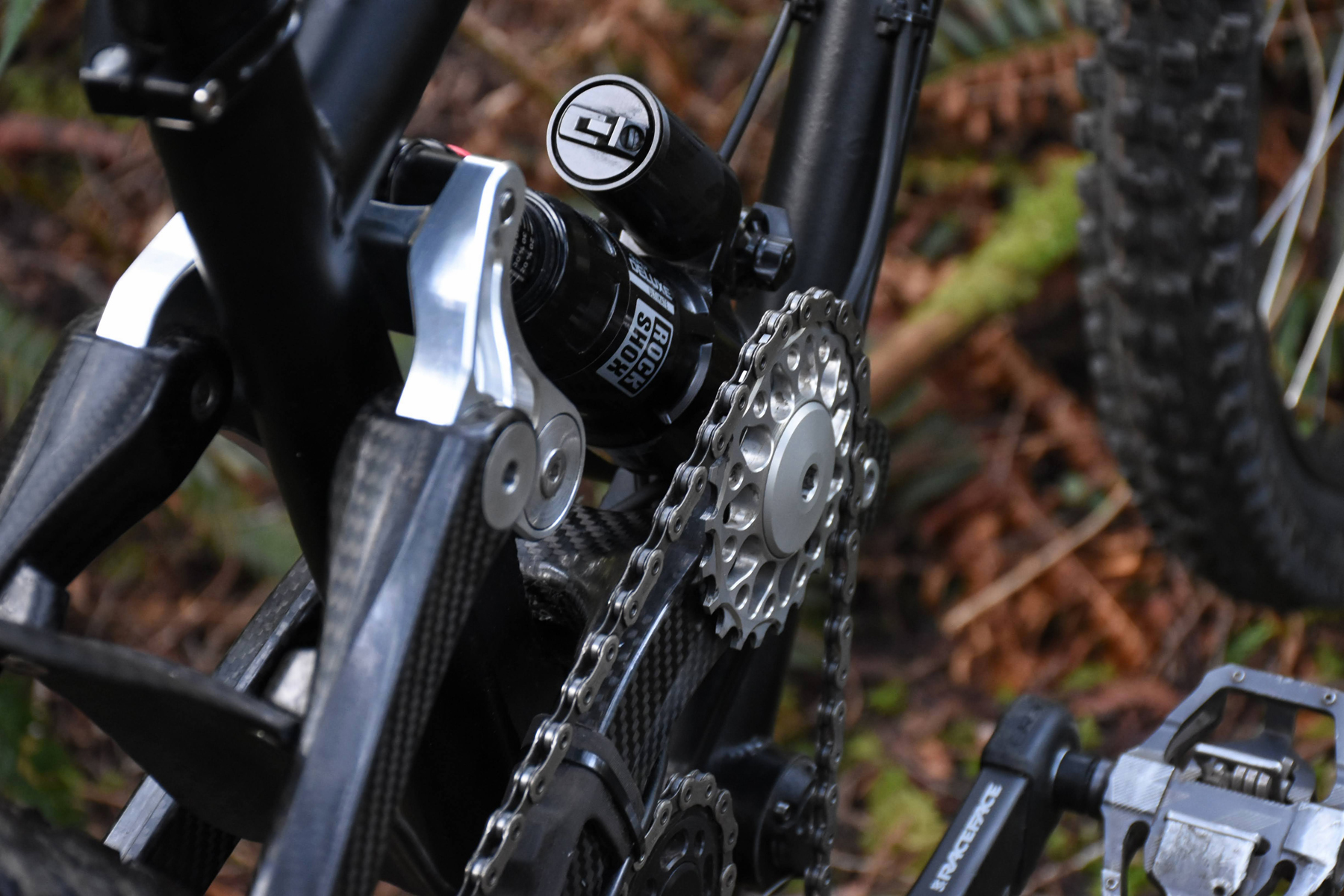
Some Questions / Things We’re Curious About
(1) High-pivot bikes tend to be thought of as big, smashy bruisers, but bikes like the Norco Optic and Deviate Highlander II prove that they can be much sharper and more lively than a lot of folks would expect. Lal is describing the Katana as falling along those lines, but how does it feel on the trail?
(2) The Supre Drive, as implemented on the Nicolai Nucleon 16, worked very well, but Lal has redesigned the chain damper for the Katana. The new one is much more compact and easier to package, but how does its performance compare?
Bottom Line (For Now)
We were quite impressed with the Supre Drive when we reviewed it on the Nicolai Nucleon 16, and while that bike did a number of things well, it also had a few quirks and was a notably planted, burly bike that took a fair bit of speed and pitch to come alive. The Katana promises to bring the Supre Drive to a much more nimble, playful, versatile package, and we’re very excited to get on one to see how it stacks up. We’ll be doing just that very soon, so stay tuned to see how it all goes.

Fascinating out of the box concept. Any ideas on weight? XL stack at 657 seems unduly high for a 130 mm trail bike (my Top Fuel XL is 630 IIRC).
The frame weighs 3.5kg, no shock. This bike has a 150mm fork and it’s meant to be a versatile all-mountain bike. The stack is similar to that of the Forbidden Druid (which has the same front and rear travel and is also high pivot).